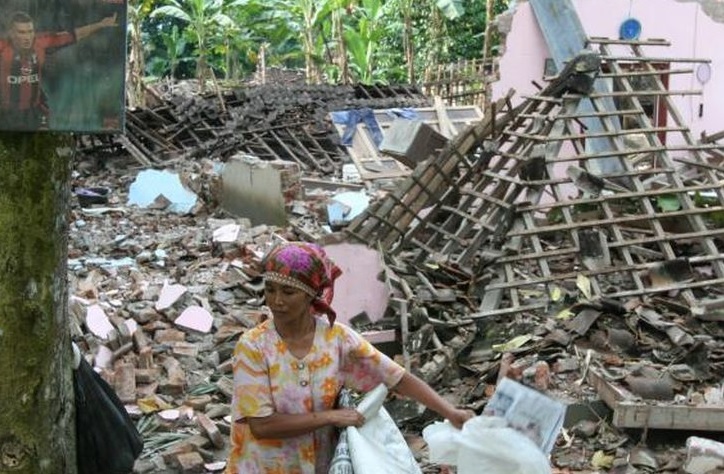
UGM Center for Disaster Studies (PSBA) held an online disaster discussion on Thursday (4/6). The theme raised in the disaster discussion this time was “The Reflection of Yogyakarta Earthquake 2006”. This event also marks the 14th anniversary of the accident.
Dr. Gayatri Indah Marliyanti, ST. M.Sc., UGM Geological Engineering Earthquake Expert, said that we could learn so many things that could be learned from the earthquake 14 years ago. On the morning of May 27, 2006, the quake had a magnitude of 6.3 SR. Strength with that scale generally does not cause fatal damage.
However, the earthquake had a massive impact on the amount of damage caused in almost all the DIY regions. And it caused 6,000 deaths. Gayatri said this was due to the source and depth of the earthquake that was very close. “The source of the earthquake was on land at the Opak Fault, which stretches the Yogyakarta area due to the subduction of oceanic plates and continental plates. And its depth is only 12.5 Km underground, so the effect reaches around VI-VII MMI,” she said.
Gayatri said that the condition of the Yogyakarta land surface also affected the damage caused by the earthquake. She pointed out that this area of Yogyakarta was in a basin that stretched from the Kulon Progo Mountains and the Southern Mountains. This area is called the Yogyakarta Basin.
According to Gayatri, the basin currently has been filled with rocks, sand, and soil from the eruption of Mount Merapi. The depth of loose sediment is approximately 50 meters. “When the earthquake occurred, the rock was exposed to the amplification wave, causing the surface above to experience a hard shock, and the result was what happened in 2006,” she explained.
At that time, no one expected an earthquake to occur, not because of the vigorous Merapi volcano. At that time, the geological study was unable to predict the existence of the fault, now known as the Opak Fault. Therefore, there would be no earthquake occurs.
“After the earthquake struck, academics began to reexamine the geological conditions of the area of Yogyakarta aggressively. They also searched for old study literature. It finally found that this was not the first earthquake that occurred in the Yogyakarta area based on the writing of a researcher from the Netherlands. There have been dozens of earthquakes of varying magnitude during the 200 years in the Opak Fault. One of them was a big earthquake that occurred in 1867, which reached VIII MMI,” she said
From these conditions, Gayatri assessed that the Yogyakarta Provincial Government should strengthen itself as a disaster resilient area, especially related to the design of earthquake-resistant buildings. This initiation is needed to be made due to the active Opak Fault and other faults that can cause earthquakes.
“Research related to the source of the earthquake and the unknown must continue to be done synergistically between stakeholders as an anticipatory step although we do not know when the earthquake will come because there is no tool that can detect it. However, seeing the community’s location, which is in an earthquake-prone area, we can prepare it from making earthquake-resistant buildings. The earthquake did not kill humans. Victims fell because of buildings that could not stand shocked,” she concluded.
Dr. Djati Mardianto, S.Sc., M.Sc., UGM PSBA Researcher, also presented insight into this theme. He explained about PSBA UGM assisted village in Klaten, namely Sengon Village, which was initiated in 2018 to become an Earthquake Resilient Village. He said this village was once one of the communities affected by the 2006 earthquake. Now the village has been classified as a Primary Category of Resilient Village. Hopefully, in the last year of this development, there would be the improvement of coaching in this village to the middle or even to the main category.
Author: Hakam
Photo: Kompas.com
Translator: Natasa A

